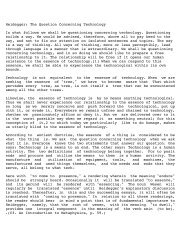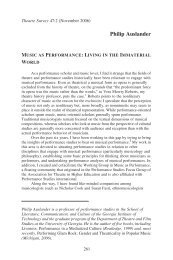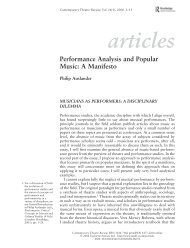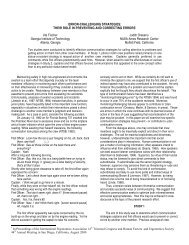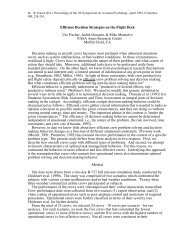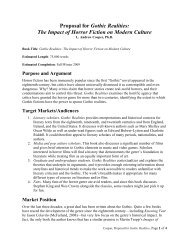INTERACTION DESIGN PRINCIPLES FOR INTERACTIVE ...
INTERACTION DESIGN PRINCIPLES FOR INTERACTIVE ...
INTERACTION DESIGN PRINCIPLES FOR INTERACTIVE ...
You also want an ePaper? Increase the reach of your titles
YUMPU automatically turns print PDFs into web optimized ePapers that Google loves.
3.7 SHOPPING<br />
Shopping, or purchasing goods and services through the television, is also known<br />
as “t-commerce.” According to Digitsoft.tv, T-Commerce is attractive to consumers<br />
because they do not need to purchase any additional equipment or learn a new<br />
technology: “The iTV experience is simple, uses the familiar remote control and<br />
potentially reaches a wider audience than the Internet… Gallup research found that 42%<br />
of respondents over the age of 50 would be interested in purchasing items via iTV<br />
although they may be uncomfortable using PC technology” (http://www.digisoft.tv).<br />
Similarly, research out of Murdoch University in Australia indicates that “it’s not about<br />
how the iTV technology is technically superior or in some way safer than the Internet.<br />
It’s about the social context through which iTV transactions are facilitated… people trust<br />
their TV more than the computer” (Kingsford-Smith, 2003).<br />
Adams, Anand & Fox forecast that the following three types of t-commerce will<br />
emerge (2001):<br />
Push Commerce: Push commerce will give users special offers through<br />
commercials or programs. For instance, WebTV viewers in San Francisco were<br />
recently offered a 30% off coupon for Melissa Etheridge CDs from CDNow. This<br />
interactive ad’s response rate was 22%, as compared to the typical >1% online<br />
response rate.<br />
Enhanced Shopping Channels: Enhanced shopping channels will give consumers<br />
the opportunity to make a purchase online. Enhanced shopping channels are<br />
expected to increase impulse buying.<br />
Virtual Mall: The virtual mall will give consumers access to a catalog of products<br />
that users can browse, access, and place an order in, at any time.<br />
In 1999, twenty percent of U.S. households made purchases from a home<br />
shopping network. According to TechTrendes, 46% of U.S. consumers are interested in t-<br />
commerce, and 80% of active home shopping network users are interested in t-<br />
70



